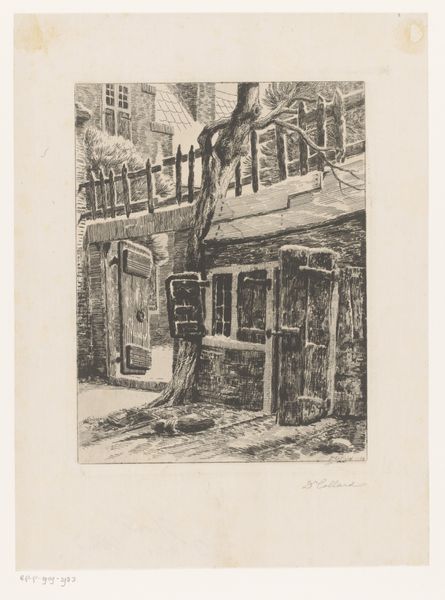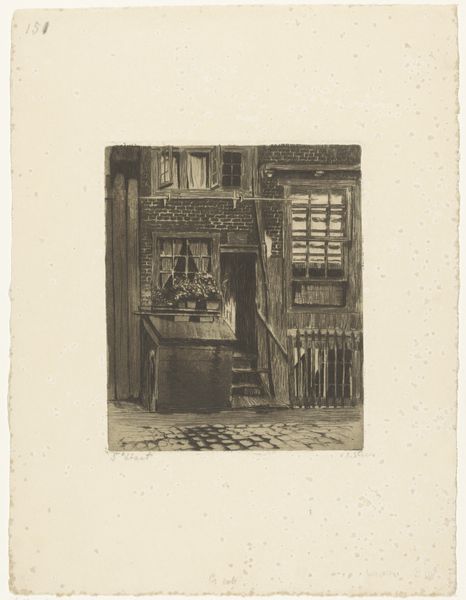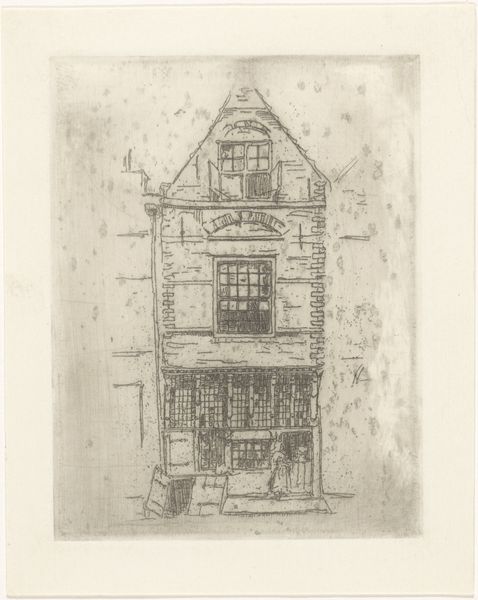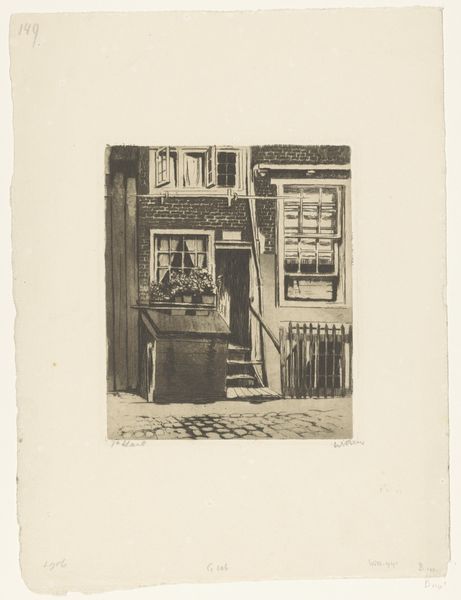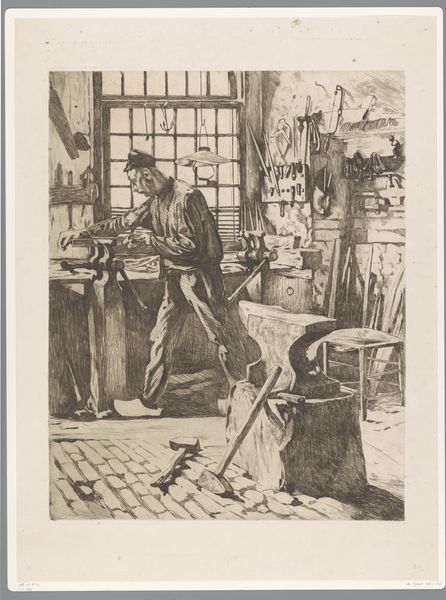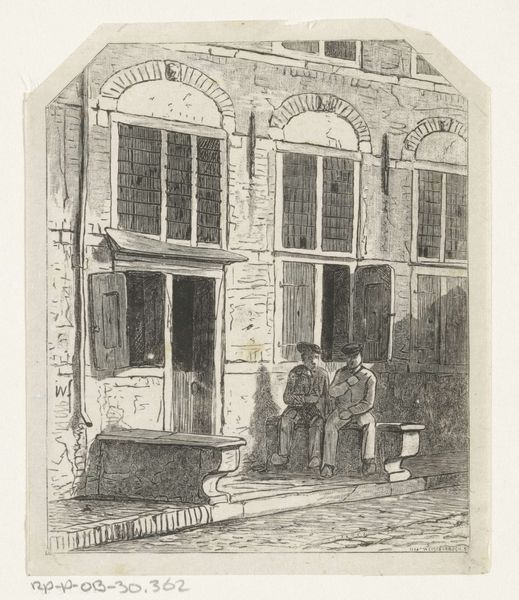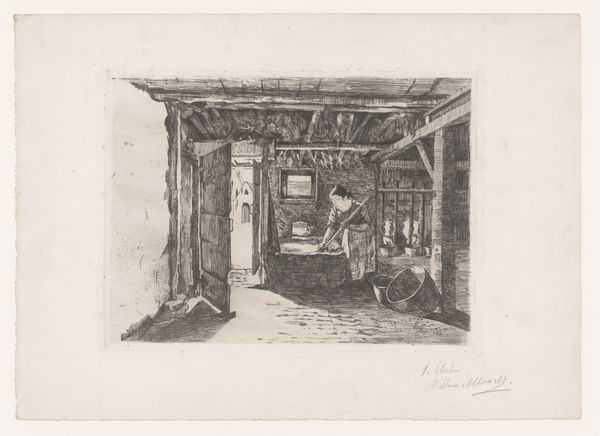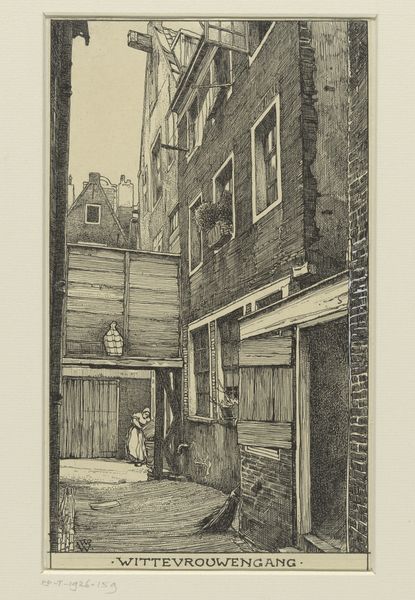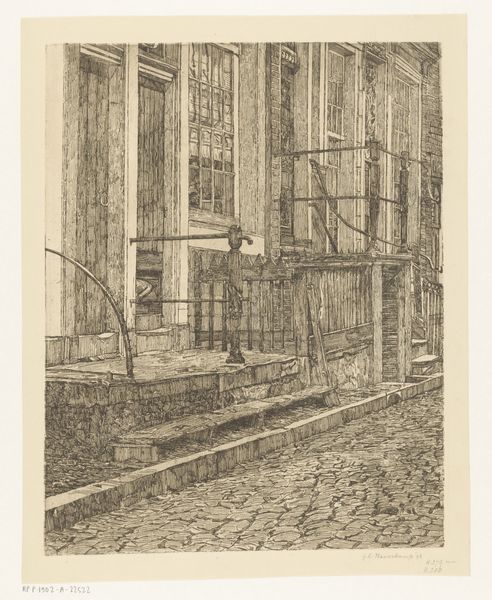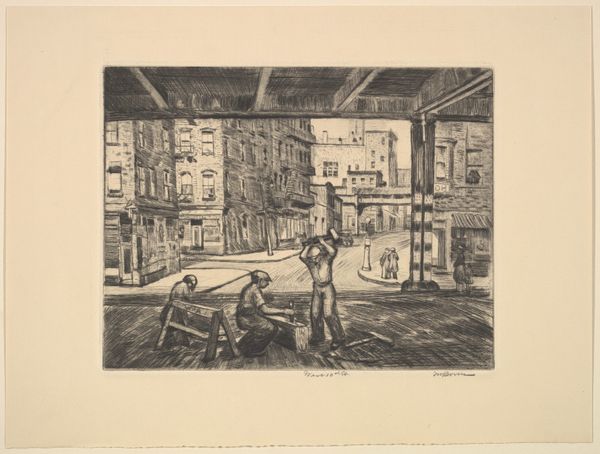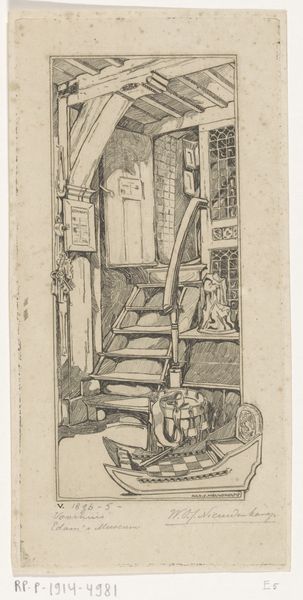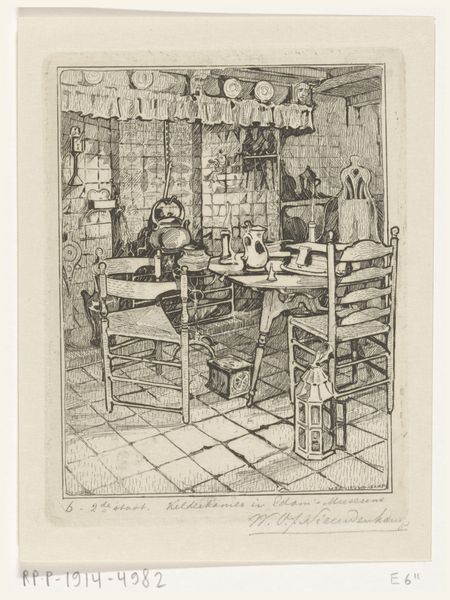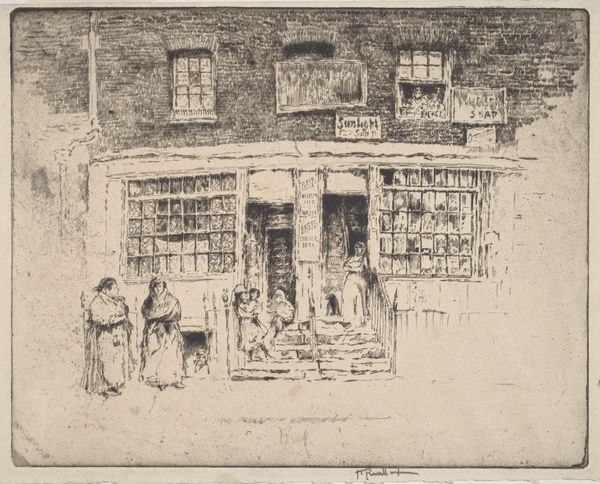
drawing, pen
#
drawing
#
pen drawing
#
pen illustration
#
pen
#
cityscape
#
realism
Dimensions: height 318 mm, width 238 mm
Copyright: Rijks Museum: Open Domain
Curator: Here we have "Glas- en aardewerkwinkel," which translates to "Glass and Pottery Shop." It’s attributed to Lambertus T.C. Lourijsen and believed to have been created sometime between 1895 and 1936. It's rendered with pen and ink in a highly detailed drawing. Editor: The overall tone, given the tight linework and heavy use of hatching, feels rather somber. Yet, at the same time, the density of objects creates a visually busy composition that somehow brings it to life. Curator: Indeed. The abundance of glass and earthenware displayed indicates the burgeoning consumer culture of the period, accessible not just to the wealthy. Look closely at the signs; there’s an interesting layering of advertisements, and some handwritten notes. It’s fascinating as a glimpse into street life. Editor: Observe how Lourijsen uses a single light source, most likely overhead, which makes certain forms pop, lending the drawing an impressive depth, especially on those glazed surfaces. But the spatial relationships are peculiar... slightly compressed? Curator: That slight distortion likely reveals artistic license taken to emphasize specific details. Remember, this was a period when documentary photography was developing; art didn't always need to adhere to a strictly representational agenda. Lourijsen’s purpose perhaps was less documentation and more evocation. These weren’t luxury objects, but everyday things available for a certain clientele. Editor: The artist uses a meticulous, almost obsessive detailing which really conveys a texture; it speaks volumes about his dedication and the material culture he is referencing. The textures achieved on both the cobblestones of the street to the ceramic vessels displayed create visual rhythm. Curator: This artwork is valuable precisely for its cultural commentary. We glean insight into urban commerce, shop keeping practices, the everyday interactions. Lourijsen offers more than an aesthetic exercise. Editor: From a formalist view, I am stuck by how Lourijsen used a complex range of shading with line making this two dimensional piece seems more substantive. He creates light with this linear method which conveys this piece from becoming overly dark. Curator: The power of art lies in revealing the richness of social reality! I think these subtle works reflect how visual elements construct layers of meaning. Editor: Art's intrinsic properties shape, shift, and alter this meaning which ultimately can be so evocative!
Comments
No comments
Be the first to comment and join the conversation on the ultimate creative platform.
